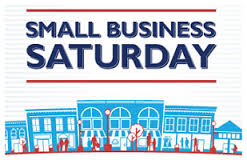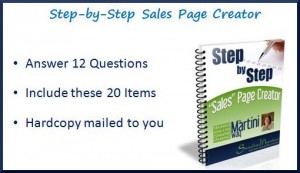 With Black Friday, Small Business Saturday, Cyber Monday around the corner and the holidays kicking into full gear, the sales are on.
With Black Friday, Small Business Saturday, Cyber Monday around the corner and the holidays kicking into full gear, the sales are on.
Sales are good right?
Your customers and clients benefit by getting your amazing quality for less money and you get more customers and clients.
Well. . .sorta.
Sales are good when framed properly.
You receive an email with a Groupon special. That hotel you’ve always wanted to go to and heard amazing things about is 50% off. You register, excited about the savings.
The problem? Even if you had an incredible time, you’ll likely only stay with them when you see similar sales. Subconsciously, their 50% off special is the true price for you. After all, why else would they knock the price down so much?
The problem for the hotel is that they’ve now attracted a slew of customers who are extremely price sensitive — only staying when there’s a big discount.
If you’ve gone through all the time and energy to create a value-driven business which incorporates the tenets of Extreme Client Care™ at every turn, the last thing you want to do is devalue your programs, products and services by discounting.
The same is true for your business. If you regularly offer a program at $1497 and give it an “early bird” special of only $297, the perception is that the program is worth $297 and the rest is “fluff” or “gouging”.
Here are some ways to create sales or specials which enhance rather than detract from your business’ value — “non-sales” if you will:
Clearing the Shelves
Out with the old, in with the new. Have new programs, products and services coming up and you’re ready to retire existing ones? Great time for a sale.
Prepays
For clients and customers who want to pay now for programs, products and services received later, you can offer a prepay total that is less than if they invested in each item as they wanted it.
For example:
- The yoga instructor who offers 10 sessions for $300 when, purchased by the class, would total $350.
- The chiropractor who charges $5000/year for unlimited visits.
- The virtual assistant who charges $500 for 10 hours prepaid in advance or $55/hour if purchased individually and invoiced.
There are many reasons for charging less for prepayments, including guaranteed customers and clients, less overhead and less marketing required.
Beta Programs, Products and Services
Have a new program, product or service that you want to test out with your clients and customers? Offer a beta program.
Essentially, you let them know that it’s new and you’re still finalizing/tweaking things. In exchange for feedback, you’re offering the program, product or service at a special investment level.
For example:
- Local cafe testing a new coffee vendor offers a free coffee daily for a week in exchange for filling out a comment card.
- Yoga studio offers reduced cost classes for participants with a new yoga instructor.
- Business coach offers a new group program to 5 people for half the planned investment in exchange for feedback before rolling it out to her full community.
- Virtual assistant offers a new service for 1/2 the regular investment for 30 days to gauge results and whether to incorporate in her regular offerings.
Early Bird and Added Value
“Early Bird” specials can be a great way to jumpstart enrollment/investment in your event, program, product or service.
Lowering the price however devalues the entire thing you’re offering and makes potential future customers question whether they should just wait “until next time” to get the lower rate.
Sample “early birds” that work really well focus on value-added.
The only difference between “early bird” and “added value” here is that the early bird specials have some type of a scarcity factor:
- “good through Friday”
- “only for the first 5 people”
- one of my favorites: “This offer expires either on Friday or after 10 enrollments, whichever happens first” — combines both hard date and the “unknown” of when 10 (or any number) of people will enroll
Keep your program, product or service at its intended pricing and add more value. For example:
- If a coaching program, add a 30-minute call with you for the first 5 signups
- If a new line of lotions, add a free smaller size of another scent for all orders before Friday
- If a new client at the local animal hospital, have your vendors donate items to create a “new puppy” or “new kitten” welcome bag
- If catering an office party, toss in a tray of appetizers
- If a chiropractor, offer free x-rays for new patients who purchase 3 sessions
The added item should be something that’s “consumable” and encourages your clients and customers to stay with you. Items that are “special” deserve the same Extreme Client Care™ that you incorporate into all your programs, products and services.
The Bundle
Before I learned what happens behind the scenes, I used to enjoy watching “American Pickers” — a show where two guys travel the country picking through barns, garages, etc. to find treasures that are often forgotten.
In almost every show, there was the offer of “The Bundle” where “Frank” would put several items in a pile and attempt to offer one lump sum which always totaled less than the items would have been individually.
Bundling your programs, products and services is a good way to offer something “for sale” without devaluing it and while giving your clients additional value.
For example:
- Bundle a workbook with a book sale as my client Sydney Barrows (www.SydneyBarrows.com) is doing with her Uncensored Sales Strategies book. The price is more than the book, but less than the book and workbook would sell for separately.
- Bundle private mentoring with investment in a group program. The private mentoring and group program together are less than either separately.
- Dr. Doni Wilson (www.DrDoni.com), a client and naturopathic doctor offers a “Natural Medicine Closet” on her site so you’ll always have what you need if you become ill. The total cost? Less than the individual items bought separately.
- A local Hallmark store also sells some clothing and offers flip-flops with a sunhat or a scarf with matching gloves.
- Restaurants do this well with their “buy one entree, get one of equal/lesser value with purchase of two beverages”.
Bundling results in increased revenue for you and added convenience/value for your clients and customers.
(Have your sale ready, but unsure of how to create a sales page which gets results? Check out our Sales Page Creator below!)
Sales Wrap-up
In essence, you want to have a reason for your sales, some context outside of simply increasing cash flow which can give off a “desperate” energy.
A sale for “cash flow” purposes almost always backfires and can actually have the opposite effect as shown below:
 This means that you need to sell twice as many programs, products and services to receive the same profit when you offer a sale versus adding something of value. (Click here to read 2 Ways Your Sales Can Go Bad Quick.)
This means that you need to sell twice as many programs, products and services to receive the same profit when you offer a sale versus adding something of value. (Click here to read 2 Ways Your Sales Can Go Bad Quick.)
In addition to the effect on profit, there are the ramifications to your reputation:
- Existing clients who paid “full” price may feel slighted at worst and wait for your next sale to get lower rates at best.
- All the work you’ve put into creating an environment of Extreme Client Care™ is diminished by devaluing your programs, products and services.
- Prospective clients will wait until the next sale, believing the lower amount to be the true value of what you offer.
Essentially your business will attract clients who are there for the price and not you/the value you provide.
In thinking of your next “sale”, how can you add value to what you already offer, encourage prospective clients to give you a chance and keep existing clients happy and re-investing?
Enjoy the above? Check out our other complimentary small business reports here.
Originally published 11/2015 and updated 10/17/16.
